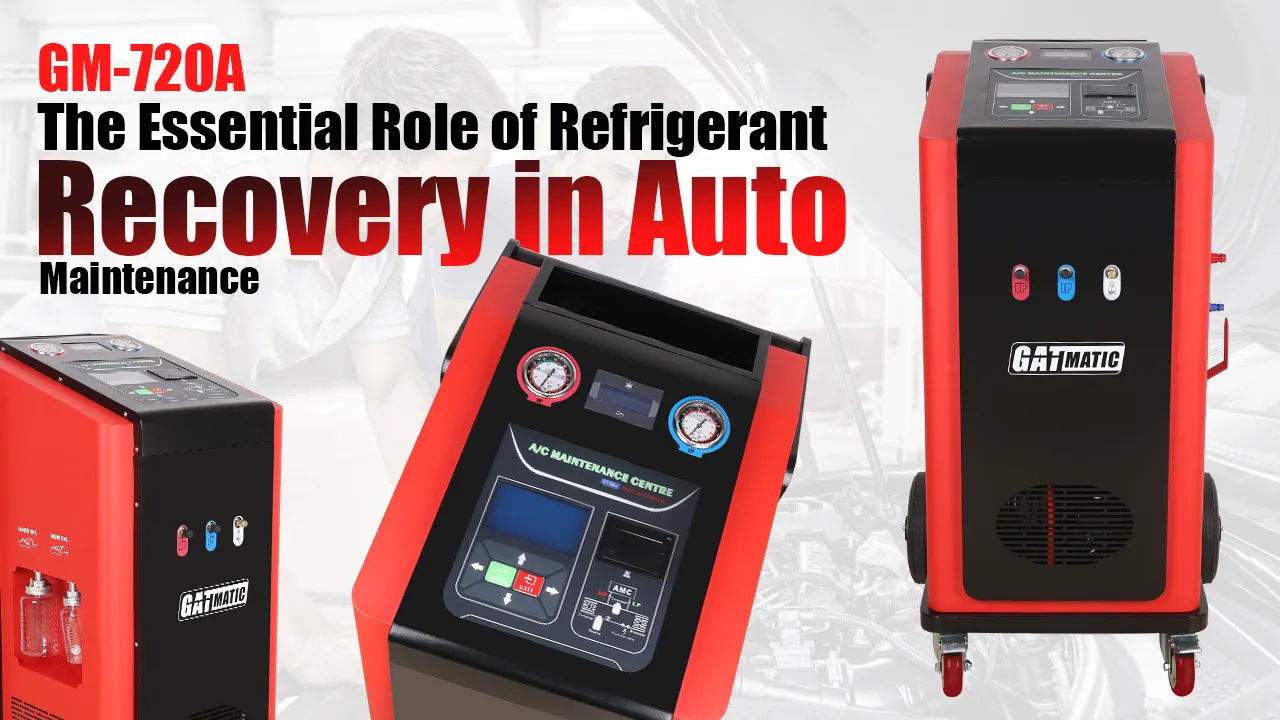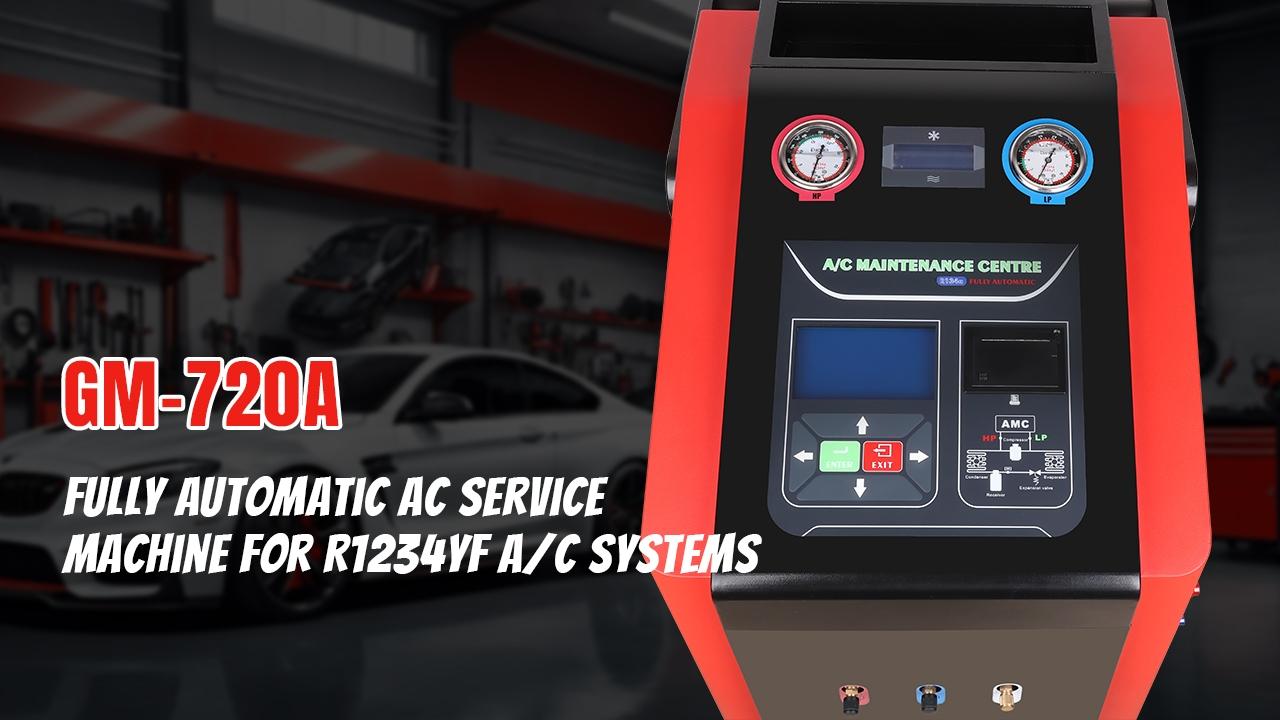The Essential Role of Refrigerant Recovery in Auto Maintenance
Refrigerant recovery is the safe and controlled removal of refrigerant from air conditioning systems before repairing or servicing them. Usually, this process needs to be accomplished with the aid of refrigerant recovery equipment
Environmental Protection
One of the primary reasons for recycling refrigerants is to prevent harmful emissions into the atmosphere. Many refrigerants used in automotive air conditioning systems, in particular, are potent greenhouse gases, whose release contributes to climate change. By recovering and recycling these refrigerants, we can effectively reduce harm to the environment while helping to comply with regulatory requirements related to air quality and climate change.
Cost Reduction
Refrigerants are expensive, but recycling them during repairs ensures their reuse. This not only reduces the need to purchase new refrigerant, saving repair shops money and reducing the financial burden on vehicle owners. Furthermore, recycled refrigerant can, in some cases, be cleaned and purified before being reused, transforming it into a valuable resource rather than discarded waste.
Regulatory Compliance
Refrigerant recycling is a legal requirement in many countries and regions. For example, the US Environmental Protection Agency (EPA) requires refrigerant recovery during air conditioner repairs to reduce environmental impact. Failure to comply with these regulations can result in significant fines and other legal liabilities. By investing in refrigerant recovery equipment, automotive service centers can better fulfill their environmental obligations while effectively mitigating potential penalties.
Improved System Performance
Refrigerant recovery in modern vehicles is typically accomplished using specialized refrigerant recovery machines. The primary function of this equipment is to safely extract refrigerant from the vehicle’s air conditioning system and transfer it to a storage tank, from which the appropriate amount of new refrigerant is then added to the vehicle’s system.
The whole process includes the following steps:
-
Connecting the Recovery Machine: The technician first connects the hose to the vehicle’s air conditioning system’s service port to ensure the equipment is properly connected to the vehicle’s system and leak-free.
-
Refrigerant Extraction: The recovery machine’s built-in vacuum pump and compressor extract the refrigerant from the vehicle’s air conditioning system and safely transfer it to the machine’s sealed container for storage.
-
Filtration and Purification: Most AC recovery machines are equipped with a filter to remove impurities or contaminants from the refrigerant, ensuring its quality and facilitating subsequent reuse.
-
Refrigerant Filling: Set the fill level, start the machine, accurately inject refrigerant, and monitor pressure and flow.
-
Leak Detection
Modern refrigerant recovery equipment incorporates advanced technologies to greatly simplify recovery operations. Features such as automatic refrigerant type identification, real-time pressure monitoring, and integrated leak detection improve recovery efficiency and ensure operational safety. Some equipment even allows technicians to track refrigerant usage, helping to ensure compliance with industry standards and regulations.
When choosing refrigerant recovery equipment, finding the ideal model to meet your needs is crucial to ensuring safe and efficient operation. The following factors are worth paying attention to:
-
Capacity: The equipment’s processing capacity should match the refrigerant capacity of common customer vehicles to avoid job delays due to insufficient equipment.
-
Compatibility: Choose a model that is fully compatible with the refrigerants currently used in the vehicles you service, especially new refrigerants like R-1234yf, to ensure smooth operation.
-
Efficiency: Investing in a machine with fast recovery capabilities can significantly reduce work time and help improve overall efficiency.
-
Durability and Maintenance
Refrigerant recovery plays an integral role in the responsible and efficient maintenance of automotive air conditioning systems. It offers repair shops environmental, economic, and operational advantages while also ensuring regulatory compliance. Investing in high-quality refrigerant recovery equipment is a wise move for any automotive repair service, helping to protect the environment, reduce operating costs, and improve customer satisfaction.
Q: What refrigerants need to be recovered during automotive AC maintenance?
A: The most commonly used refrigerants in automotive air conditioning systems are R-134a and R-1234yf. Both of these refrigerants must be recovered properly to comply with environmental regulations and avoid the release of harmful gases into the atmosphere.
Q: Can refrigerant be reused after recovery?
A: Yes, refrigerant can often be reused after recovery. The recovered refrigerant is typically filtered and purified to remove contaminants before being reintroduced into the vehicle’s AC system. This recycling process helps reduce costs and minimize environmental impact.
Q: Is refrigerant recovery mandatory by law?
A: Yes, refrigerant recovery is mandatory in many countries, including the United States, where the Environmental Protection Agency (EPA) enforces regulations requiring the recovery of refrigerants during vehicle AC maintenance. Failing to recover refrigerant can result in fines and legal consequences.
Q: Can I use the same refrigerant recovery machine for both R-134a and R-1234yf refrigerants?
Describe Your Needs In Detail!
We will carefully evaluate your needs and give professional solutions.




